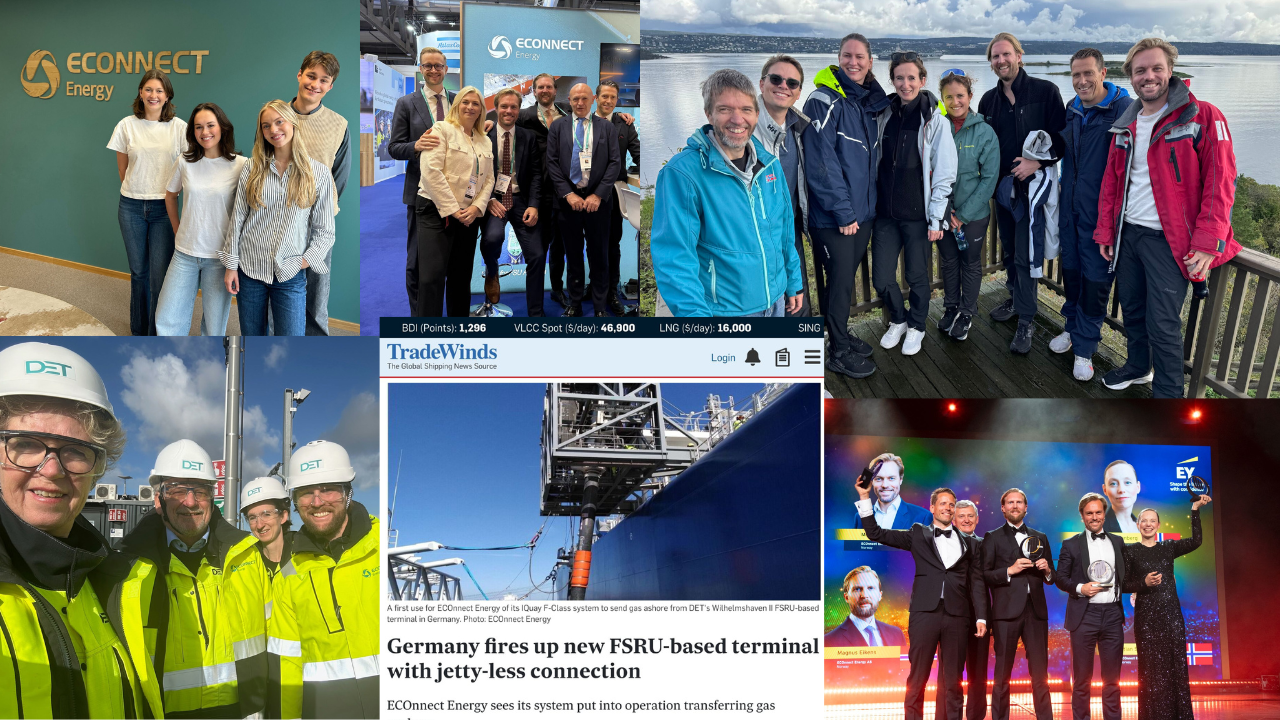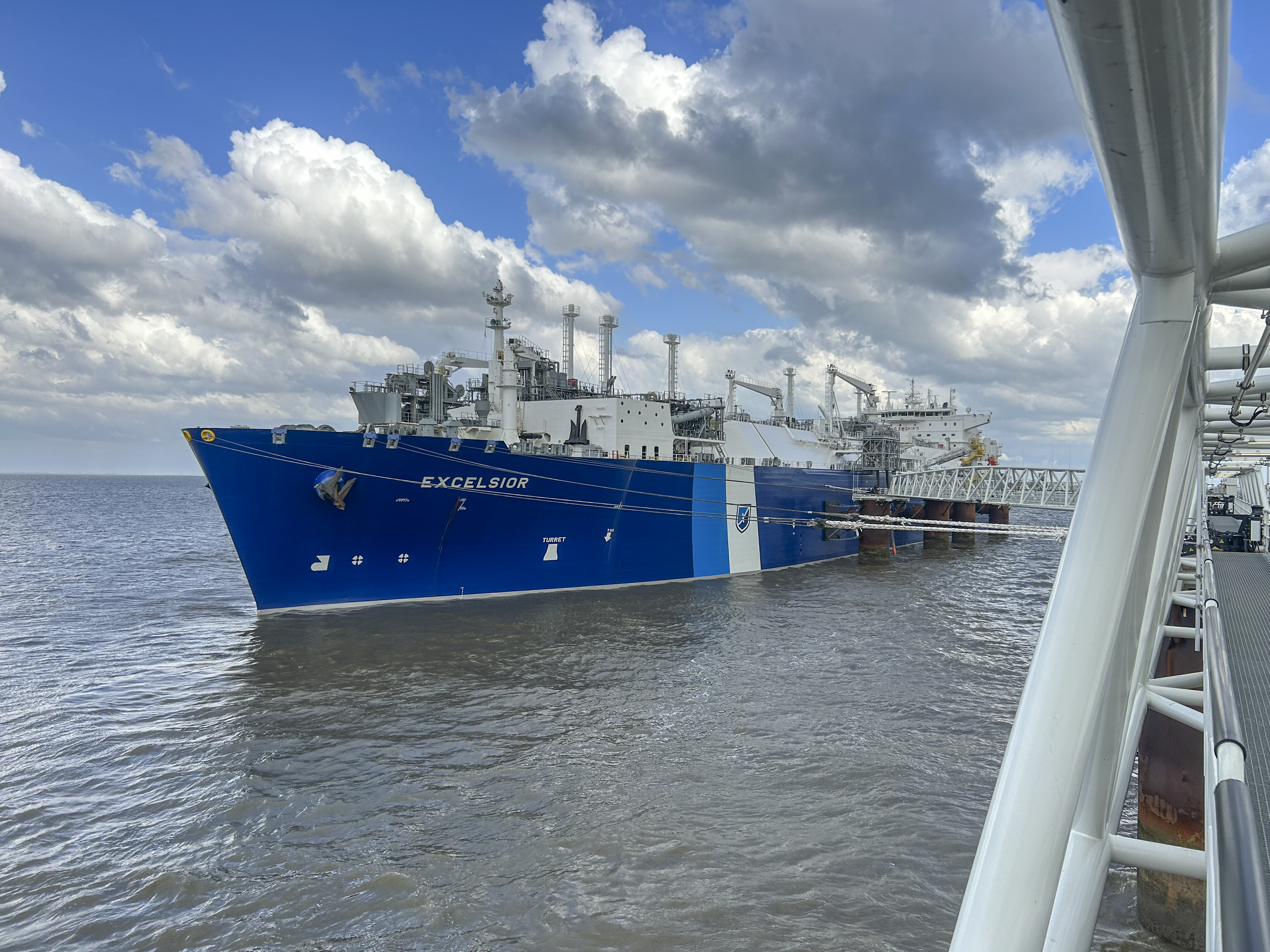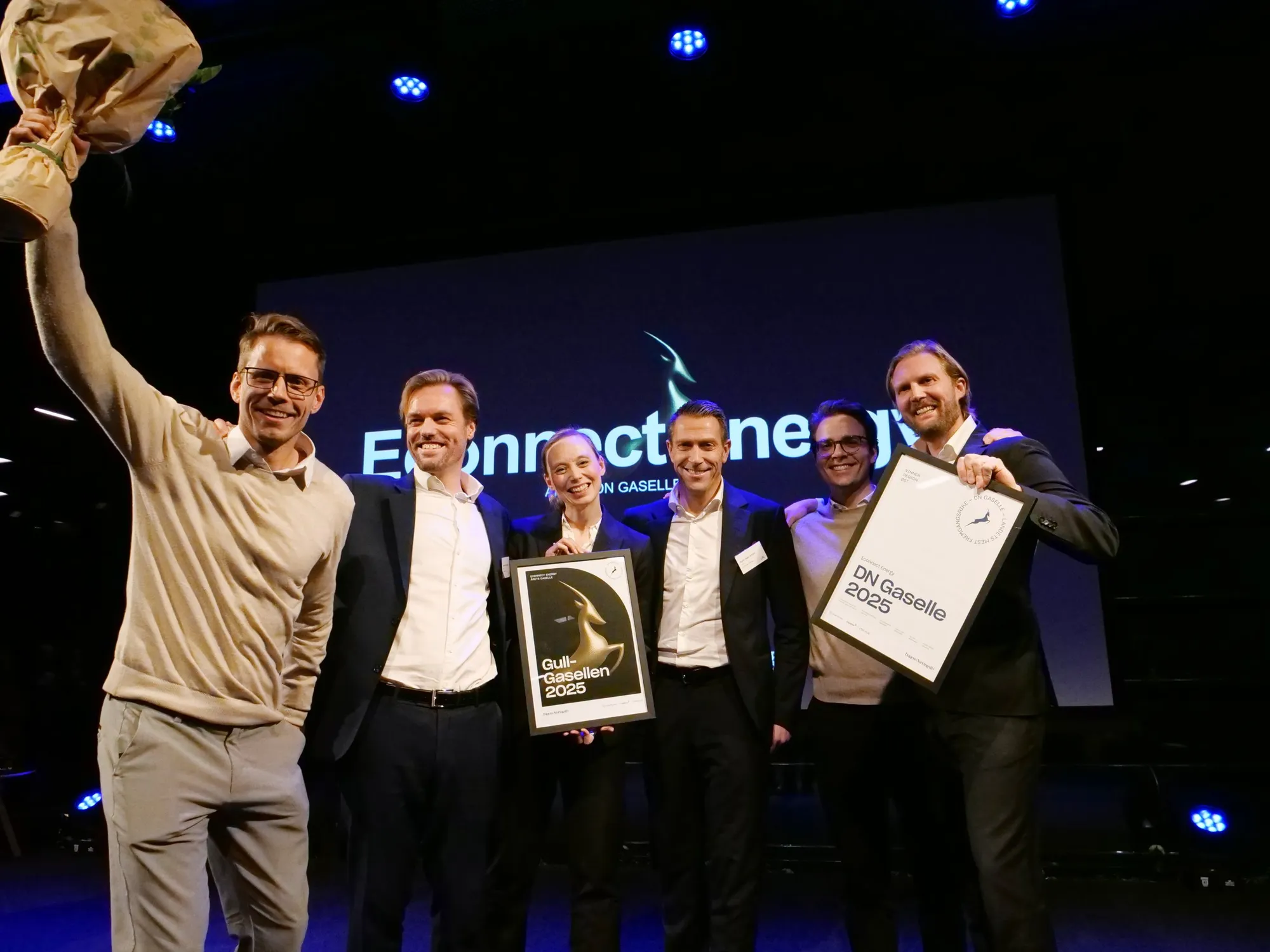The LNG Value Chain
In order to understand the economics of the LNG Value chain, and the opportunities ahead, we first need to revisit the different links; natural gas production and exploration, liquefaction and storage, shipping, and receiving, regasification and distribution. In this article, we will go into further detail regarding the economic factors of the value chain and project development process, and identify sources of financial risk in LNG projects. To start off, let’s take a look at the composition of the LNG value chain again.
The chain starts off with the exploration and production of natural gas, and includes extracting unprocessed natural gas from gas reserves, rough on-site processing, and bringing the gas from the site of extraction to a processing facility. Here the feed-gas is first cleaned from impurities and liquids to reach certain specifications. It is then sent to a liquefaction plant for pre-cooling and liquefaction, and finally stored and prepared for transportation. The LNG is most commonly transported in large quantities by designated ships called LNG carriers. LNG loading takes place at the exporting site before the gas is shipped to an onshore receiving terminal or an offshore unit with receiving capabilities. It is then regasified and prepared for distribution to a gas network, where it can be utilized for e.g. power generation.

Commercial structures
In some projects, an integrated company is responsible for multiple links in the chain, most commonly upstream production and liquefaction. In the integrated commercial structure the revenues come from the ability to conduct the whole upstream process from production to liquefaction, in a profitable manner. Moreover, if a company only owns the liquefaction plant, it can source natural gas from one or several producers, and profit from the price margins between the natural gas and final LNG product sold to customers. This is the merchant commercial structure. A third one is the tolling commercial structure, which is common in the US. In this structure the liquefier does not claim ownership to either the natural gas or LNG, but simply gets a fee for the liquefaction services.
The same three commercial structures also apply for in the case of import terminals. The integrated company can integrate further forwards in the supply chain to include the export terminal in addition to the upstream production and liquefaction assets. The merchant structure is practically the same as for the export terminal, but reversed, meaning that the owner of the import terminal buys LNG and sells natural gas. The tolling structure is also similar, but with liquefaction services switched out with services such as offloading, storage and regasification.
Project development
Evidently, the LNG value chain can be both technically and commercially complex, and no value chain is exactly identical to the next one. To ensure that the project provides value to all it’s participants each link in the chain must perform its obligations and operations, as the failure of one link may greatly affect other important links in the value chain. Compliance between the different stakeholders in a project is facilitated from the very beginning of the project development process, where the cost drivers and potential issues for a specific LNG value chain is identified.
The time frame from initial idea and feasibility studies, to construction and completion can be as much as ten years. Hence, for the development to be executed successfully a suitable project structure must be established. Where various risks and rewards are anticipated and adequately distributed between the participants to align all stakeholders interests. This is crucial for the project to attract customers and investors and secure sales contracts and capital. Not to mention keeping all parties satisfied through the entire lifetime of a project, which can vary from 20-40 years for a liquefaction project. Import facilities, both the traditional land based ones and FSRUs are cheaper than the liquefaction projects, but needs similar considerations of long time perspectives and cooperation between multiple partners.
It is common to divide the progression of a project under development into different phases, where the pre- and post-FID (Final Investment Decision) phases are the most general ones. Reaching FID requires three work streams to function in parallel, namely the commercial, technical and financial work stream. The necessary contracts and agreements are established in the commercial, while the technical works tream includes technical feasibility and selection of a suitable engineering, procurement and construction (EPC) contractor. The simultaneous progression of both is key to enable favourable financing terms. The FID itself is a critical point, deciding whether or not a project will go ahead with further development, including the timely and costly construction phase. Before the FID can be made, pre-FID inquiries and activities include:
- Feasibility studies
- Pre Front End Engineering Design (Pre-FEED), where the detail of technical work is taken to the next level.
- Front End Engineering Design (FEED), where engineering work for exact estimates are done. Activities up to this point include obtaining permits, examining reserves and reaching sales- and purchase agreements.
Post FID-activities include the actual construction work on the project, which potentially takes the longest time and highest costs. For the generalized value chain discussed in this article, activities in this phase include the design of pipeline networks from reserve site to liquefaction plant, drilling, deciding on whether to build new or to utilize existing liquefaction and regasification plants, securing LNG carriers and choosing technology for receiving and/or loading LNG from the carriers.
Breaking Down Cost and Risk of the LNG Value Chain Cost Structure
According to a publication from The Oxford Institute for Energy Studies, the cost breakdown by LNG plant area (LNG liquefaction plant) can be estimated as in the figure below. Pre-operational cost drivers include the range and complexity of the project itself, but marine facilities, including jetties and extensive dredging (CAPEX directly connected to the building of a jetty) are also highlighted as a major cost generating item of budget.

CAPEX for regasification plants typically consists of costs associated with vessel berthing, storage tanks, regasification equipment, send-out pipelines, and metering of new facilities (IGU, 2017). Hence, also this link in the value chain highlights cost drivers connected to the interface between LNG ships and onshore facilities.
Construction costs (CAPEX) accounts for a substantial part of a project investment, but also considering the sum of operational costs (OPEX) across the entire supply chain is key to identify potential sources of financial risk. Combined figures from PwC and a publication from the journal Industrial & Engineering Chemistry Research (I&EC) break down the operating cost for a general value chain as following:
- Upstream development: 10-11 % of costs
- Refrigeration & liquefaction: 40 - 42 % of costs
- Shipping/transportation: 20 - 30 % of costs
- Regasification and distribution: 20 - 27 % of costs

How can the Overall Project Cost and Risk be lowered?
Project economics is a development risk for an LNG project, and should be monitored and managed correctly. Long-lasting contracts have traditionally been the ground layer for financing LNG projects, and high project costs combined with an increasingly dynamic monetary market can largely impact a project’s FID. Post-FID cost-overruns are also a big source of financial risk.
To develop natural gas projects of sufficient scale to defend the costs associated with a liquefaction plant, large upfront capital investments have typically been required. In order to secure payback, the majority of gas volumes are sold to large, credit worthy buyers through long term take-or-pay contracts before first gas. However, new supply coming from the US and Australia has flooded the market. The excess LNG not tied to rigid contracts has been bought by trading houses and portfolio players and allocated to new buyers on the short-term and spot market, often priced based on relative supply and demand of natural gas instead of traditional oil-indexation. This has enabled smaller players to enter the market and utilize the emerging contract flexibility to take on smaller amounts of natural gas on short notice and competitive prices. This solution is highly compatible as a supplement for season and weather dependent renewables such as hydro, solar and wind.
Enabling LNG to smaller, less credit-worthy players has been attempted through various business models, one of them being the hub and spoke model. Where a large scale carrier transports the LNG in large quantities to a centralized hub, where it is further re-distributed to smaller offtakers. Demonstrated as a suitable solution to regions of scattered demand, such as in the Caribbean and Central America, which can benefit from proximity Henry Hub indexed contracts from the US Gold Coast. This allows the utilization of economies of scale through sourcing LNG through conventional suppliers and infrastructure, with the flexibility provided by innovative technology and commercial structures.
As implied earlier, intervening in projects targeting the interface between onshore off/on-loading facilities and ships could be a way to reduce financial risk. As discussed in another post, carrying out a jetty project alone, could take between two to five years. Operating costs (OPEX) include work hours spent on personnel operating the jetty during LNG transfer, and numerous tugboats needed to position the LNG carrier correctly and securely. Also evident is how the FSRUs and FLNGs have moved regasification and liquefaction offshore to avoid large CAPEX, complex permitting processes and sunk costs of onshore terminals. For the same general purpose ECONNECT Energy has developed a floating jettyless IQuay transfer system serving as a cheaper solution to the corresponding implications of a jetty, further cutting project cost and increasing flexibility of LNG projects. Contributing to the mission of enabling sustainable and cleaner energy solutions to more people, quicker.
Bibliography:
- Deloitte (2018) How technology and changing business models are impacting the future of LNG. https://www2.deloitte.com/ng/en/pages/energy-and-resources/articles/how-technology-and-changing-business-models-are-impacting-the-future-of-lng.html
- Deloitte (2017) Work in progress: How can business models adapt to evolving LNG markets? Available at: https://www2.deloitte.com/content/dam/Deloitte/us/Documents/energy-resources/us-er-business-models-adapt-to-evolving-lng-markets.pdf
- IGU (2017) 2017 World LNG Report. Available at: https://www.igu.org/sites/default/files/103419-World_IGU_Report_no%20crops.pdf (Accessed 06 August 2020).
- Industrial & Engineering Chemistry Research (2018) Key Issues and Challenges on the Liquefied Natural Gas Value Chain: A Review from the Process Systems Engineering Point of View. Available at: https://www.researchgate.net/publication/321990488_Key_Issues_and_Challenges_on_the_Liquefied_Natural_Gas_LNG_Value_Chain_A_Review_from_the_Process_Systems_Engineering_Point-of-View (Accessed 05 August 2020).
- McKinsey & Company (2020) Winning the race for world-class LNG optimization capabilities. Available at: https://www.mckinsey.com/industries/oil-and-gas/our-insights/winning-the-race-for-world-class-lng-optimization-capabilities
- McKinsey & Company (2019) Global gas and LNG market outlook to 2035 | McKinsey. Available at: https://www.mckinsey.com/industries/oil-and-gas/our-insights/global-gas-and-lng-outlook-to-2035
- PwC (2014) The Progression of an LNG Project. Available at: https://www.pwc.com/gx/en/mining/publications/assets/pwc-lng-progression-canada.pdf (Accessed 05 August 2020).
- The Oxford Institute for Energy Studies (2014) LNG Plant Cost Escalation. Available at: https://www.oxfordenergy.org/wpcms/wp-content/uploads/2014/02/NG-83.pdf (Accessed 06 August 2020).
- U.S Department of Energy (2017) Global LNG fundamentals. Available at: https://www.energy.gov/sites/prod/files/2017/10/f37/Global%20LNG%20Fundamentals_0.pdf
- Wood, A., Viscidi, L. and Fargo, J. (2018) LNG IN THE AMERICAS How Commercial, Technological and Policy Trends are Shaping Regional Trade. Available at: https://www.thedialogue.org/wp-content/uploads/2018/04/LNG-in-the-Americas.pdf







